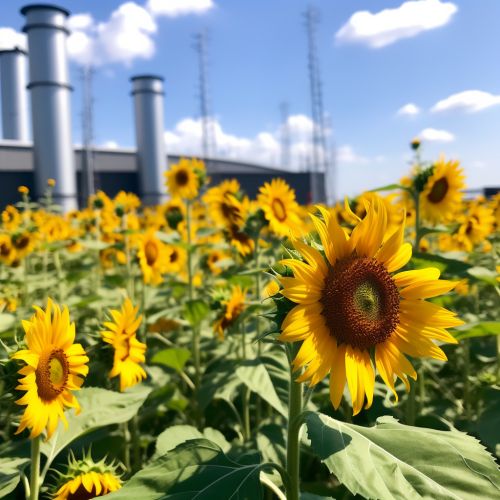Phytoremediation
Introduction
Phytoremediation is a bioremediation process that uses various types of plants to remove, transfer, stabilize, and/or destroy contaminants in the soil and groundwater. The term comes from the Greek word "phyto", meaning plant, and the Latin word "remedium", meaning restoring balance. The technology is a cost-effective, non-intrusive, and aesthetically pleasing method to remediate polluted sites, particularly those contaminated with heavy metals and organic compounds. More on Phytoremediation
Mechanisms of Phytoremediation
Phytoremediation mechanisms can be broadly classified into five categories: Phytoextraction, Phytodegradation, Rhizofiltration, Phytostabilization, and Phytovolatilization.
Phytoextraction
Phytoextraction, also known as phytoaccumulation, involves the uptake of contaminants by plant roots and their translocation to plant shoots and leaves. It is mainly used for the removal of heavy metals from the soil. Certain plants, known as hyperaccumulators, have the ability to grow in metal-rich soils and accumulate these metals in their tissues at concentrations much higher than typically found in plants. More on Hyperaccumulators
Phytodegradation
Phytodegradation, or phytotransformation, is the breakdown of contaminants within plant tissues. Plants can metabolize, degrade, or detoxify organic pollutants, transforming them into less toxic or non-toxic substances. This is achieved through the action of plant-produced enzymes and the metabolic processes occurring within the plant.
Rhizofiltration
Rhizofiltration is a water remediation technique that involves the absorption or adsorption of contaminants, particularly heavy metals, onto plant roots. The plants are then harvested and disposed of. This technique is particularly effective in treating contaminated groundwater and surface water.
Phytostabilization
Phytostabilization involves the reduction of contaminant mobility in the environment through the action of plant roots. This is achieved through the absorption and accumulation of contaminants within the plant roots, immobilizing them and preventing their migration into the groundwater or their uptake by other organisms.
Phytovolatilization
Phytovolatilization is the process by which plants take up water containing certain organic contaminants and release them into the atmosphere as gases. This process can be enhanced by genetic engineering to increase the ability of plants to volatilize certain contaminants.


Applications of Phytoremediation
Phytoremediation has been successfully applied in the remediation of soils and waters contaminated with heavy metals, radionuclides, pesticides, solvents, explosives, crude oil, polyaromatic hydrocarbons (PAHs), and landfill leachates. It has been used in the cleanup of contaminated sites worldwide, including industrial sites, mining sites, military bases, and agricultural lands.
Limitations and Challenges
Despite its advantages, phytoremediation also has several limitations and challenges. These include the limited depth of plant roots, which restricts the cleanup to surface soils and shallow groundwater; the potential for contaminant uptake by wildlife or humans if the plants are not properly managed; the slow rate of cleanup compared to other remediation technologies; and the potential for the spread of contaminants through the food chain.
Future Directions
Research in phytoremediation is currently focused on enhancing the effectiveness of the technology through genetic engineering and the use of microbial communities to assist in the remediation process. Future directions also include the development of methods to manage and dispose of the biomass produced during the phytoremediation process.
